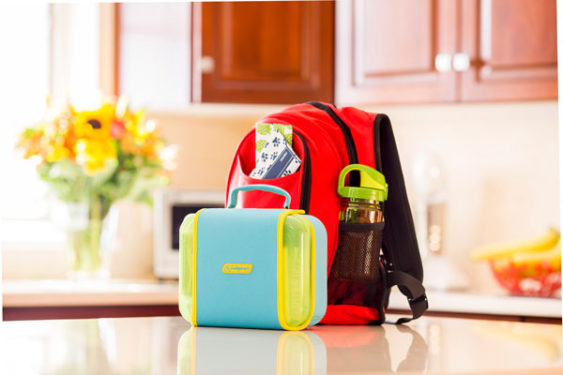
While packing lunch for the kids can seem like a daily grind, use the task as an opportunity to help kids form great lifelong habits. Here are small ways that changing the family lunch-making routine can have large and positive impacts on the environment, family finances and even health.
• Pack with Reusables
On average, a school-age child with a lunch packed in single-serve disposable materials like plastic snack bags or juice boxes generates 67 pounds of waste per school year, which equates to 18,760 pounds of lunch waste for an average-size elementary school, according to the estimates of Waste Free Lunches, a non-profit organization.
Reduce waste and save money in the process with reusable containers. Waste Free Lunches estimated that choosing only reusable containers can save almost $250 per person, per year. To learn more, visit WasteFreeLunches.org.
• Made in USA Products
The “Three Rs” – Reduce, Reuse and Recycle – are a great refrain for environmentalists, but to ensure a family’s daily habits are minimally impacting the environment, consider choosing Made in USA products. This small change automatically reduces someone’s carbon footprint by a magnitude of 10, according to a recent study conducted by Nalgene Outdoor, which offers a vast variety of BPA- and BPS-free reusable water and food containers in a myriad of colors, designs and sizes.
Explain the significance of buying Made in USA products to kids by telling them it’s like leaving a light on for 30 minutes versus three minutes.
• Buy Local Food
Without a doubt, the most nutrient-rich and often most cost-effective way to procure fresh produce is by buying locally. Anything sourced within 100 miles of home has a significantly lower carbon footprint than something that has traveled to reach grocery store shelves. Community Supported Agriculture, co-ops and farmers markets are popular ways to find local produce direct from farmers. Check out localharvest.org for local programs.
• DIY Grab-and-Go Snacks
Prepackaged snacks are often priced at a premium and rarely offer nutritious enrichment, but with just a little prep work, families create their own healthy options more affordably.
“Pack nutritious items like fruits, vegetables and nuts in clear containers in the pantry or refrigerator on Sunday, so that they are ready to ‘grab and go’ for the week,” says Peggy O’Shea Kochenbach, a registered dietitian nutritionist.
• Green Clean-up
Seek reusable items that can sustain kids’ daily activities, but also survive the dishwasher. Research shows a good dishwasher saves 3,870 gallons of water over its lifetime and uses less energy than conventional models, which helps reduce air pollution and combat global climate change, according to the Energy Star program.
